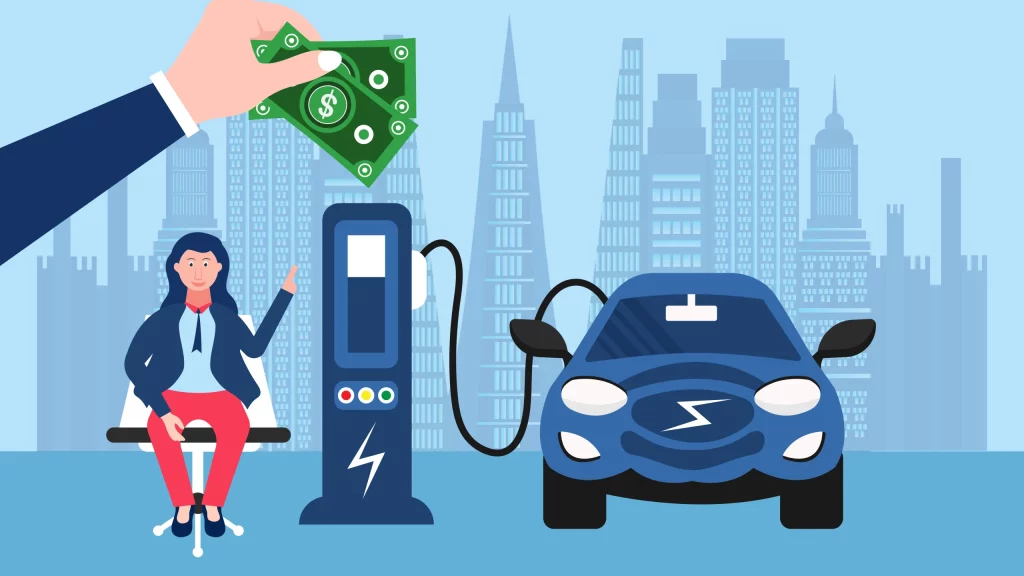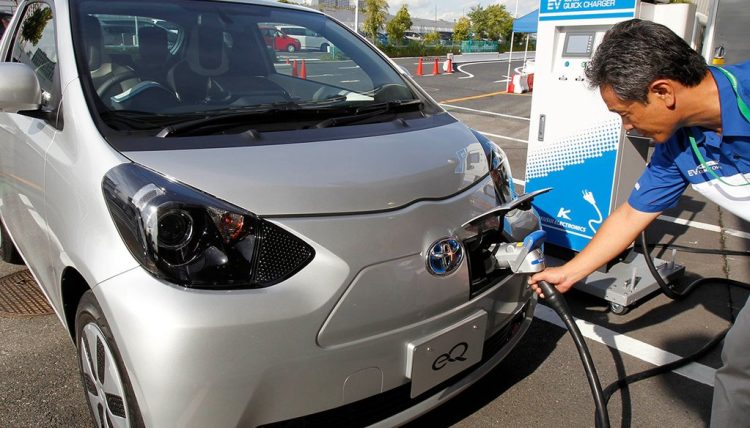Introduction: The Role of Government Incentives in Accelerating EV Adoption
As the world strives to reduce its carbon footprint and mitigate the effects of climate change, the transportation sector plays a central role. One of the most promising solutions to reducing greenhouse gas emissions from vehicles is the widespread adoption of electric vehicles (EVs). EVs are environmentally friendly, reduce reliance on fossil fuels, and help improve urban air quality. However, despite their clear environmental benefits, EVs have struggled to compete with traditional internal combustion engine (ICE) vehicles in terms of price, infrastructure, and consumer acceptance.
To address these challenges, governments around the world have implemented a wide range of incentives designed to encourage consumers and businesses to switch to electric vehicles. These incentives, which include tax credits, rebates, and subsidies, aim to reduce the upfront cost of EVs, increase their accessibility, and create a sustainable market for electric transportation. This article explores the role that EV incentives play in accelerating the adoption of electric vehicles globally. It will delve into the various types of incentives available, how they work, and the impact they have on the EV market.
The Importance of Government Incentives in the EV Transition
1. The High Cost of Electric Vehicles
While the long-term benefits of electric vehicles—such as lower operating costs, reduced maintenance, and environmental sustainability—are well established, their upfront purchase price remains a significant barrier to adoption. Although prices have dropped in recent years, EVs generally cost more than comparable gasoline-powered vehicles due to the high cost of batteries and other components. This price differential has been one of the main reasons why EV adoption has been slower than expected in many countries.
Government incentives address this financial barrier by reducing the cost burden on consumers and businesses. By offering financial incentives in the form of rebates, tax credits, or subsidies, governments can make EVs more affordable and increase their appeal to a wider range of buyers. These incentives are designed to level the playing field between electric and gasoline-powered vehicles, which continue to benefit from well-established supply chains and lower production costs.
2. Encouraging a Shift to Clean Transportation
Another important role of EV incentives is to promote the transition from fossil fuel-dependent transportation systems to cleaner, more sustainable alternatives. The global transportation sector is responsible for a significant portion of greenhouse gas emissions, with road vehicles being the largest contributors. Encouraging the adoption of electric vehicles is a key strategy for reducing emissions and achieving climate goals.
Governments view incentives as a tool to accelerate the adoption of EVs and achieve emissions reduction targets. EVs produce zero tailpipe emissions, and when charged with renewable energy, they can further reduce their carbon footprint. By incentivizing the purchase of electric vehicles, governments are directly supporting the transition to cleaner energy and helping to create a more sustainable transportation ecosystem.
Types of EV Incentives and Their Impact
1. Tax Credits and Rebates
One of the most common forms of EV incentive is tax credits. These financial incentives reduce the amount of tax that a consumer or business owes when purchasing an electric vehicle. Tax credits vary widely depending on the country, state, or region, but they are generally based on the price of the vehicle and sometimes the vehicle’s battery capacity.
In the United States, for example, the federal government offers a tax credit of up to $7,500 for qualifying electric vehicles. Some states, such as California and New York, offer additional rebates and credits, effectively lowering the price of an EV for the consumer. In the European Union, countries like Germany and France also provide substantial tax incentives for consumers purchasing electric vehicles, along with additional rebates for scrapping older, more polluting vehicles.
Rebates are another popular form of financial incentive, which provide direct cash back to consumers when purchasing an electric vehicle. These rebates can be used to offset the upfront cost of the vehicle, reducing the financial burden on consumers and making EVs more accessible. For example, in Norway, which has one of the highest rates of EV adoption globally, consumers receive significant tax breaks and exemptions from tolls and parking fees when purchasing electric vehicles.
2. Subsidies for EV Manufacturers
In addition to offering incentives to consumers, governments also provide subsidies to manufacturers to support the production of electric vehicles. These subsidies are designed to help automakers offset the high costs of developing and producing EVs, enabling them to offer more affordable models to the public.
In countries like China, the government has been a major supporter of domestic EV manufacturers, providing subsidies and funding for research and development. This support has helped to make Chinese electric vehicle manufacturers, such as BYD and NIO, global players in the EV market. These subsidies have allowed companies to develop new electric vehicle models that cater to both the domestic market and international markets, helping to create a competitive electric vehicle industry.
In the European Union, subsidies have been provided to support the development of EV infrastructure, such as charging stations, and to support automakers transitioning to electric vehicle production. This financial support is essential in building a robust EV ecosystem that can support large-scale adoption.
3. Charging Infrastructure Incentives
A significant challenge for EV adoption is the lack of widespread and accessible charging infrastructure. For consumers to make the switch to electric vehicles, they need confidence that they can charge their vehicles easily and conveniently. Governments are responding to this challenge by providing incentives for the installation of charging infrastructure, both public and private.
Many countries, including the United States, Germany, and the UK, offer grants, rebates, and tax credits to individuals and businesses that install home charging stations or build public charging networks. These incentives help ensure that EV owners have access to the infrastructure they need to charge their vehicles, reducing the barriers to EV adoption.
In some countries, such as the Netherlands, the government has committed to building a nationwide network of fast-charging stations to support the growing number of electric vehicles on the road. These investments are crucial for making EVs practical for everyday use and ensuring that consumers feel confident in their ability to use electric vehicles for long-distance travel.

Global EV Incentive Policies: A Regional Comparison
1. North America
In North America, the United States and Canada have been strong proponents of electric vehicle adoption, offering various incentives to both consumers and manufacturers. In addition to the federal tax credits available in the U.S., many states have introduced their own EV incentives. California, for example, offers substantial rebates for the purchase of electric vehicles and provides additional incentives for the installation of charging stations.
Canada also offers federal rebates for the purchase of electric vehicles and has introduced subsidies for the installation of charging infrastructure. Additionally, provinces like Quebec and British Columbia have launched their own incentives, further encouraging consumers to make the switch to electric vehicles.
2. Europe
Europe is home to some of the most aggressive EV incentives in the world. Many European countries, such as Norway, the UK, and France, offer a combination of tax credits, rebates, and exemptions from taxes and fees to promote the adoption of electric vehicles. Norway, for instance, has made significant strides toward achieving an entirely electric vehicle fleet by 2025 through a combination of incentives, including exemptions from tolls, parking fees, and road taxes.
In Germany, the government provides rebates for both consumers purchasing electric vehicles and for automakers transitioning to electric vehicle production. France offers similar rebates, as well as additional incentives for low-income consumers to access affordable EV options.
3. Asia
Asia is also seeing significant growth in electric vehicle adoption, particularly in countries like China and Japan. China, the largest automotive market in the world, has been a major proponent of EV incentives, offering substantial subsidies to consumers purchasing electric vehicles and supporting the growth of domestic EV manufacturers. Additionally, the Chinese government has invested heavily in the development of EV infrastructure, making charging stations more accessible across the country.
In Japan, the government offers tax breaks and subsidies for the purchase of electric vehicles and has committed to reducing emissions from the transportation sector through the promotion of clean technologies like EVs.
The Future of EV Incentives
1. The Need for Continued Support
As electric vehicle adoption continues to grow, governments must maintain or even increase their incentives to ensure that the transition to clean transportation is not delayed. In many countries, EV prices remain higher than those of gasoline-powered vehicles, and without ongoing financial incentives, consumers may be reluctant to switch to electric vehicles.
Additionally, governments should focus on creating a comprehensive EV ecosystem that includes not only incentives for vehicle purchases but also robust charging infrastructure and policies that support the recycling of EV batteries. This holistic approach will help ensure the continued growth of the electric vehicle market.
2. Long-Term Goals: Phasing Out Incentives
While EV incentives are essential in the early stages of market development, the long-term goal should be to create a self-sustaining electric vehicle market where EVs are competitive with gasoline-powered vehicles without the need for government subsidies. Over time, as battery technology improves and production costs decrease, the price of electric vehicles is expected to fall, making them more affordable for consumers. At that point, government incentives may no longer be necessary, and the market will be able to drive the transition to electric vehicles on its own.
Conclusion: The Critical Role of EV Incentives in Achieving a Sustainable Future
Government incentives are a critical tool in accelerating the adoption of electric vehicles and creating a cleaner, more sustainable transportation system. By reducing the financial barriers to EV adoption and investing in infrastructure, governments are helping to build a market for electric vehicles that will contribute to a significant reduction in carbon emissions and dependence on fossil fuels. As the global EV market continues to grow, it is essential that governments maintain and expand these incentives to ensure that electric vehicles become the standard mode of transportation in the near future.











































